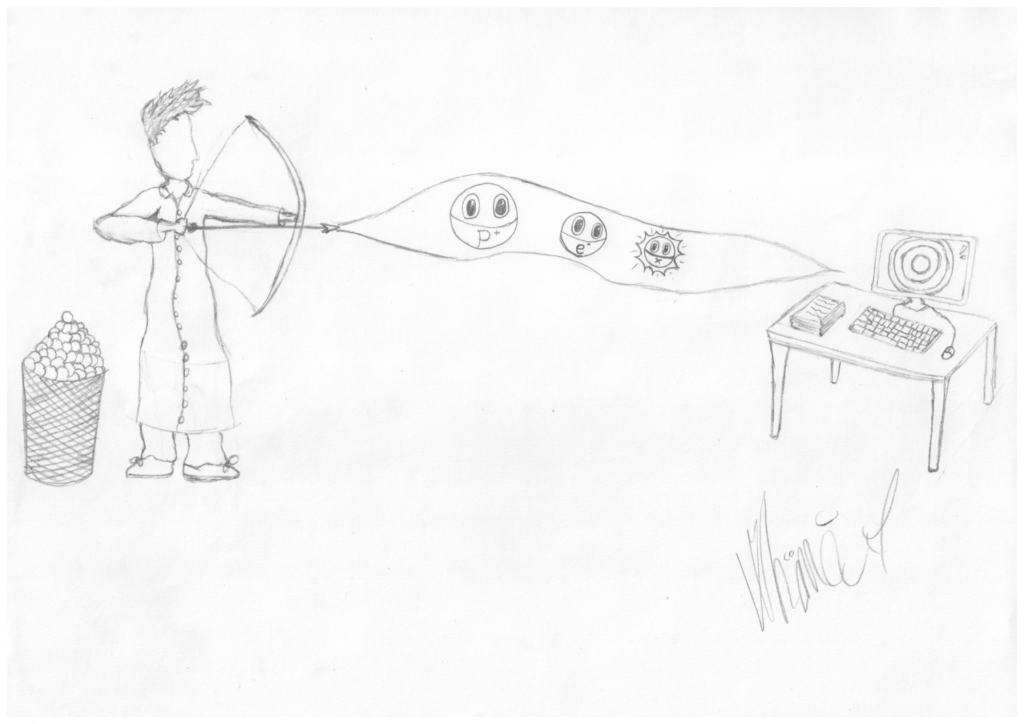
He carefully washes his hands, wears his gown, gloves and mask, then he gives the fist command to the tool man: “scalpel!”.
He sips a coffee, looks at the monitor and he thinks “now let’s go!”, then he gives the first command to the simulator: “turn on a beam!”.
Same objective: removing/controlling a cancer
Different professionals: the former, a doctor; the latter, a medical physicist.
Yes… because when a Medical Physicist prepares a radiotherapy plan, except for the gory aspects, it is actually like if he was performing surgery. In front of him: a target to hit, surrounded by organs to be spared. On his side: a many million euro technology, extraordinary particles but, most of all, his ability to use them. Because even if the patient feels nothing during the treatment, these particles can be more lethal than a scalpel…
what particles are we talking about?
Well… in the world the most commons are: protons (“big”), electrons (“small”), photons (“no mass”).
They are everywhere. But we need them “controlled”, that means directed and with a particular energy.
Let’s go deeper…
What are them?
Protons and electrons are the elements of the atom.
– They have a mass. More precisely a proton at rest has a mass that is about 1836 times bigger than the mass of an electron.
– They have an electrical charge. More precisely they have the same, but opposite, charge (so they attract each other)
Photons are packs (quantum) of energy (electromagnetic)
– they have no mass
– they have no electric charge
Where are they produced?
They are produced using particle accelerators.
Protons and electrons are produced directly.
Photons, on the other hand, cannot be accelerated but are produced from beams of electrons (conveniently slowed down) as “slowing down radiation”
Why are they used in radiotherapy?
They can penetrate matter and then release their energy within it.
But they do that in different ways…
Electrons and protons (having an electrical charge) release energy to the patient’s body during their whole path, from the entry point to the point where they stop, protons indeed release most of their energy near their stopping point, that is, at the end of their path.
Photons, on the other hand, (having no electrical charge) have much more penetrating power: they enter the body and advance undisturbed, then, at a certain depth, they suddenly interact with matter and release their energy as electrons (which, as seen before, immediately start releasing energy)
Selecting conveniently:
– kind of particles
– energy (penetration depth depends on it)
– direction
– intensity (the number of particles emitted per second)
– and the number of beans used
The medical physicist will convey the energy decided by the doctor towards the area to be treated (PTV: planning target volume). And it will be lethal like a scalpel to malignant cells; but a scalpel able to perform surgery on the patient’s body with no need to cut.


